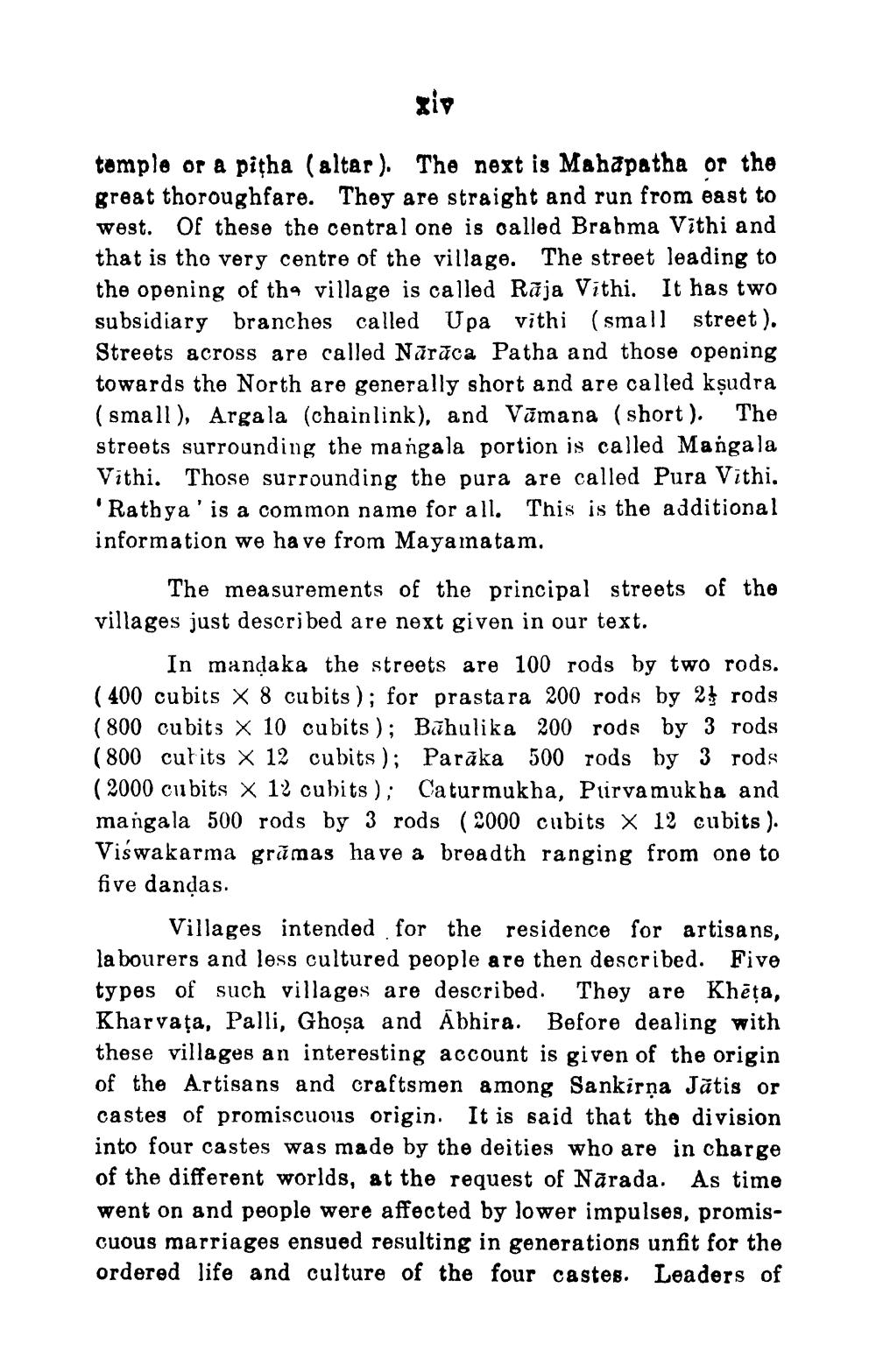________________
xis
tomple or a pitha (altar). The next is Mahapatha or the great thoroughfare. They are straight and run from east to west. Of these the central one is called Brahma Vithi and that is the very centre of the village. The street leading to the opening of the village is called Rāja Vithi. It has two subsidiary branches called Upa vithi (small street). Streets across are called Nārāca Patha and those opening towards the North are generally short and are called kșudra (small), Argala (chainlink), and Vāmana (short). The streets surrounding the mangala portion is called Mangala Vithi. Those surrounding the pura are called Pura Vithi. 'Rathya' is a common name for all. This is the additional information we have from Mayamatam.
The measurements of the principal streets of the villages just described are next given in our text.
In mandaka the streets are 100 rods by two rods. ( 400 cubits X 8 cubits); for prastara 200 rods by 25 rods (800 cubits X 10 cubits); Būhulika 200 rods by 3 rods (800 cutits X 12 cubits); Parāka 500 rods by 3 rods (2000 cubits x 12 cubits); Caturmukha, Purvamukha and mangala 500 rods by 3 rods ( 2000 cubits X 12 cubits). Viswakarma grămas have a breadth ranging from one to five dandas.
Villages intended for the residence for artisans, la bourers and less cultured people are then described. Five types of such villages are described. They are Khēța, Kharvața, Palli, Ghoșa and Abhira. Before dealing with these villages an interesting account is given of the origin of the Artisans and craftsmen among Sankirņa Jātis or castes of promiscuous origin. It is said that the division into four castes was made by the deities who are in charge of the different worlds, at the request of Nārada. As time went on and people were affected by lower impulses, promiscuous marriages ensued resulting in generations unfit for the ordered life and culture of the four castes. Leaders of




